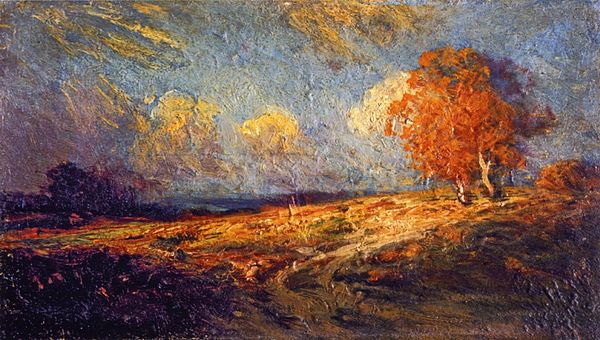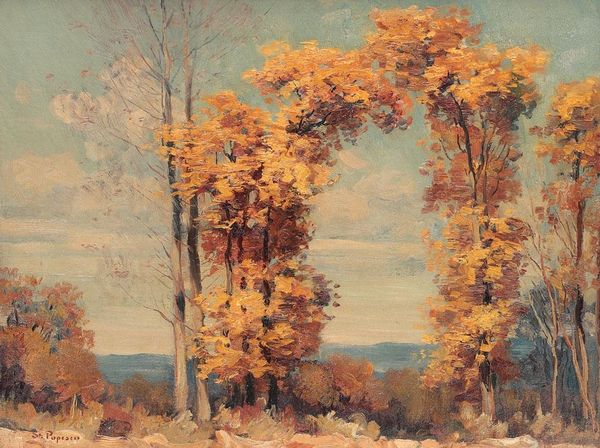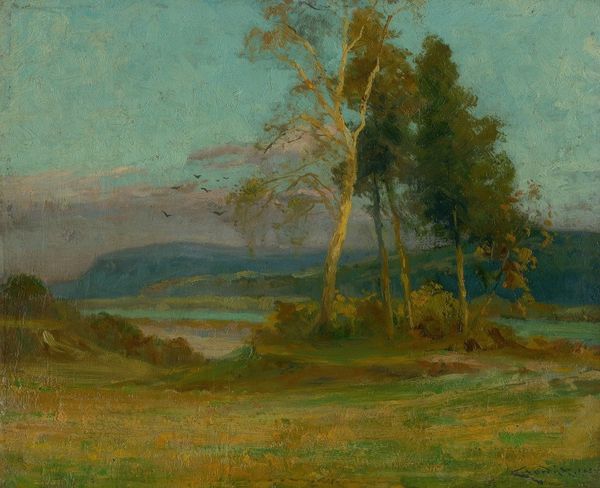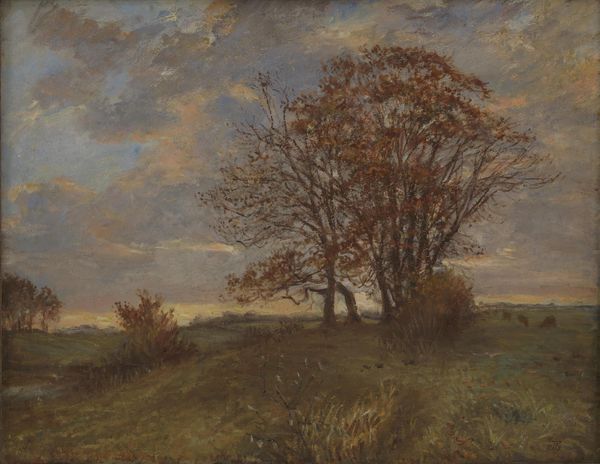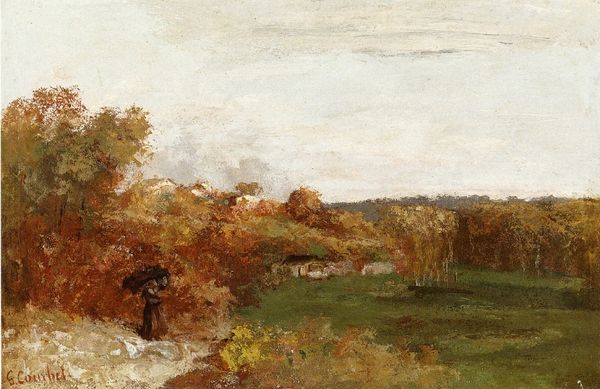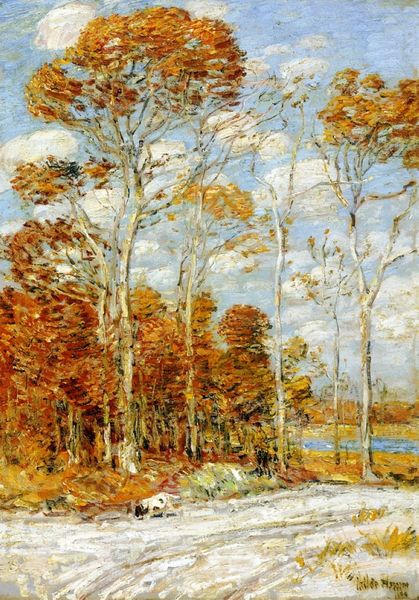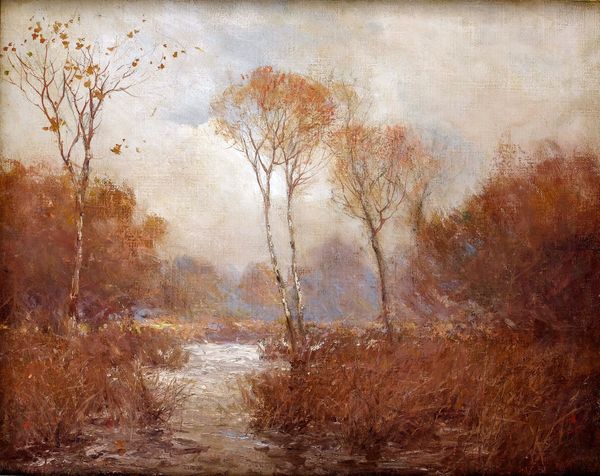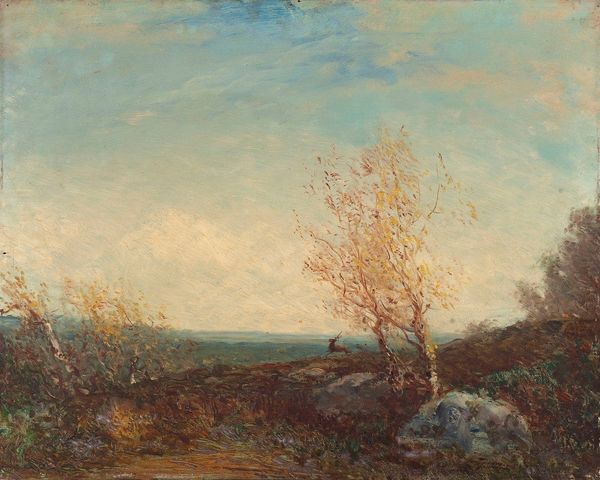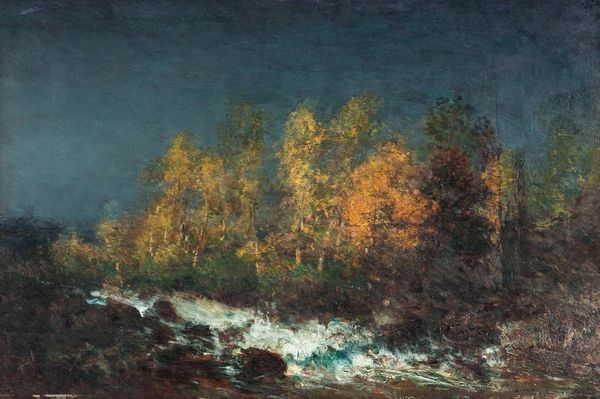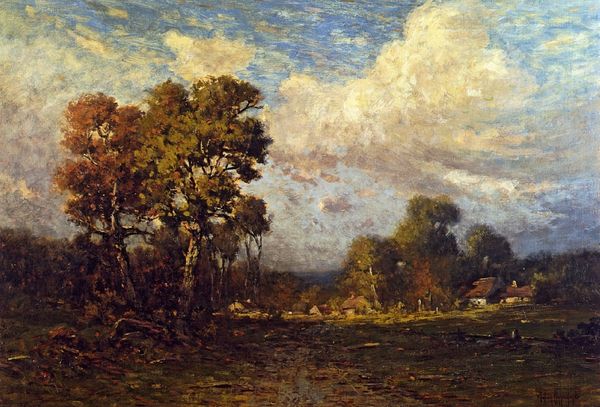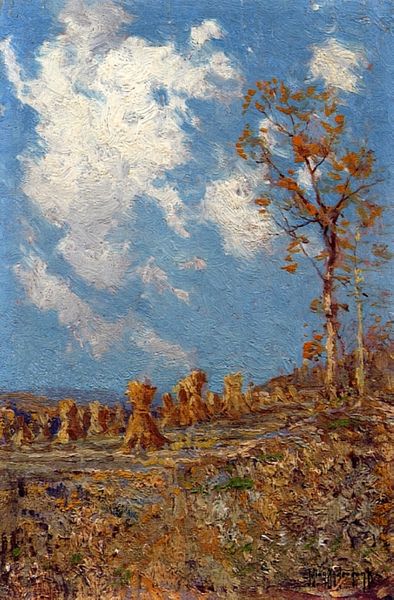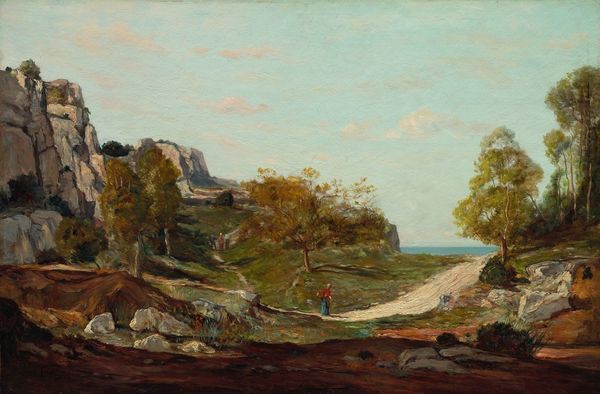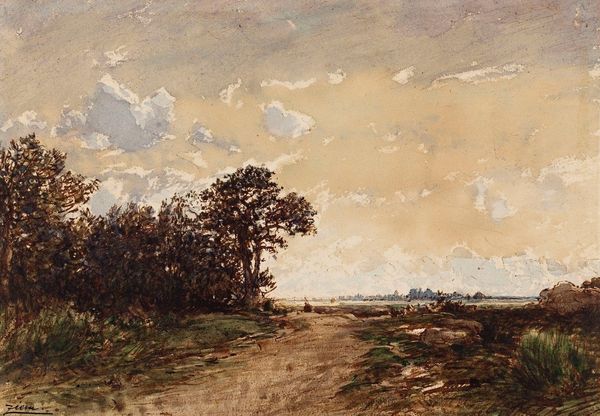
painting, plein-air, oil-paint
#
painting
#
impressionism
#
plein-air
#
oil-paint
#
landscape
#
realism
Copyright: Public domain
Editor: Here we have Robert Julian Onderdonk's oil painting, "Fall Landscape." It has a beautiful, golden hazy quality. The texture is gorgeous; the sky looks almost cracked with age, contrasting with the more fluid brushstrokes in the trees. How would you interpret the visual structure of this piece? Curator: Observe how Onderdonk orchestrates space through colour. The composition divides into horizontal registers—the foreground's muted browns and greens yield to a band of distant blue-grey, culminating in a vast, luminous yellow sky. Note how the artist’s brushwork loosens as we ascend the canvas. How might this contribute to the overall sensation? Editor: It seems to flatten the space, or at least create a contrast between the detailed foreground and the almost abstract sky. The color palette unifies the scene despite the different levels of detail. Curator: Precisely. The textural variation is paramount. The density of paint application in the foliage establishes a tactile engagement absent from the ethereal treatment of the sky. It directs our gaze. Editor: That's interesting. It is as if he's using texture to guide the eye, not just colour or light. Curator: Indeed. Consider, too, how the verticality of the trees interrupts the dominant horizontality, acting as a visual hinge. Editor: So, by analyzing the texture, colour, and spatial arrangement, we can appreciate how the artist manipulates these formal elements to evoke a particular feeling or understanding of the landscape. Thank you, I've definitely learned to think about landscapes more structurally. Curator: A rewarding avenue for exploration!
Comments
No comments
Be the first to comment and join the conversation on the ultimate creative platform.

